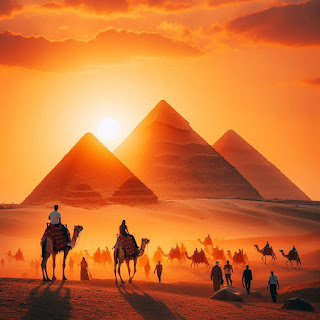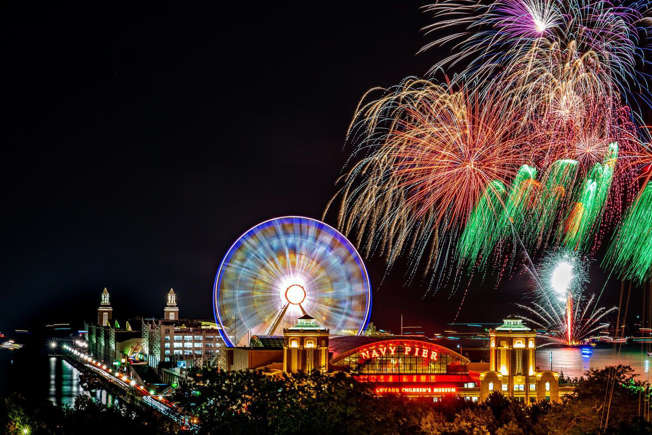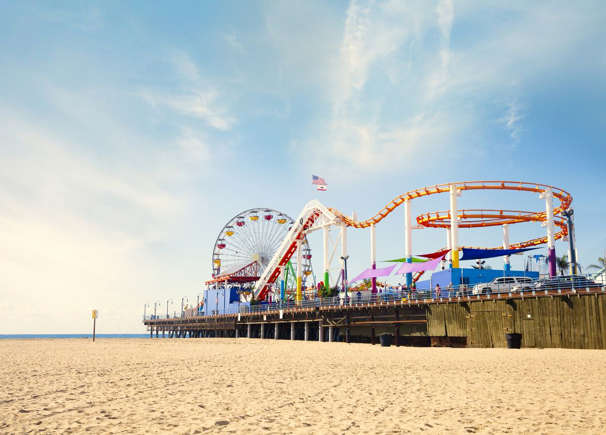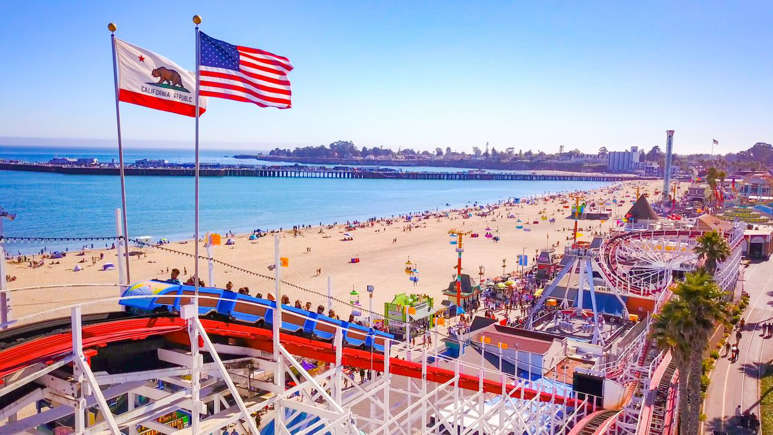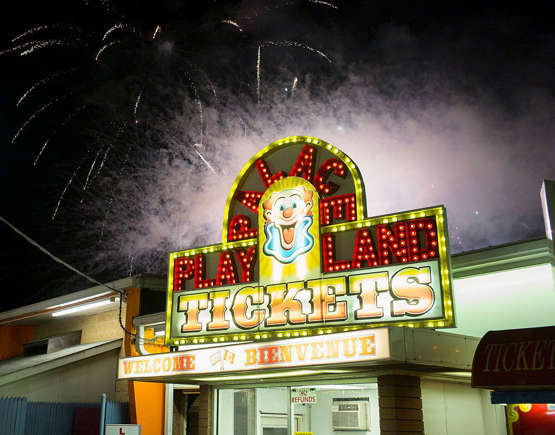Bhutan is making tourism easier and is counting on travelers to revive the economy.
========================================================================
For a country that has long prioritized a balanced lifestyle and good governance over economic gain, Bhutan is doing something it has never done: embracing more independent and cost-conscious travelers in an urgent bid to revive its sputtering economy.
Now Prime Minister Tshering Tobgay termed the Bhutanese economy "on the verge of collapse" in a November 2023 election manifesto for his People's Democratic Party, pointing out that the country's average economic growth rate stood at a mere 1.7% over five years. The result is that Bhutan faces widespread youth unemployment and declining foreign currency reserves. Tourism is seen as one of the main levers to pull.
In 2023, Bhutan welcomed 103,000 visitors, a number about two-thirds below the pre-pandemic record reached in 2019. The new goal is to go back as quickly as possible to just over 300,000 visitors annually but with a more diverse consumer base. Bhutan would like to get at least half its visitors from non-Asian markets, specifically from the US, Europe, and Australia. During the last full year before the 2020 Covid lockdowns, Indian travelers accounted for more than 73% of total arrivals.
We can grow in a way that is balanced and in consonance with the principles of gross national happiness," said Togbay, when asked about proposed plans to turn the economy around. Its GNH index measures the well-being of its residents living standards to health to cultural and environmental preservation.
Since opening itself up to tourists back in 1974, Bhutan has built its reputation on low numbers and high-paying visitors, lured by expansive vistas of the Himalayan Mountains and Buddhist monasteries teetering on cliffs. In the process, it had also earned a reputation for being inaccessible to the average tourist.
Now, to incentivize travel growth, Bhutan is addressing those roadblocks to access and cost, whether real or perceived.
Twice-a-week flights to Paro from Dubai via Drukair Royal Bhutan Airlines began flying in October. International travelers previously reached Bhutan by connecting through major Asian hubs like Singapore or Bangkok, or by transiting through India.
In August, an online directory and booking portal-first of its kind-allowed for a la carte planning by letting travelers easily filter vetted and licensed Bhutanese providers that would have otherwise been impossible to sift through without the help of a local travel agency or tour operator.
The independent-minded traveler can browse, compare, and book direct tour guide services mandatory when visiting Bhutan and accommodations, giving them the tool to shape their own trip at potentially lower costs. Until now, tour operator choices would be scarce, making it tough for comparisons to shave off added costs.
The website currently lists over 1,000 guides, 471 tour operators, more than 100 hotels, 29 homestays, and 9 restaurants. Still to come is a section on licensed car rentals, Bhutan's tourism board says, as well as shops. In a release, Kinley Gyeltshen, chairman of the Bhutanese Tour Operators Association, called the new portal "a game-changer for tourists visiting Bhutan."
Along with potential savings through self-booked travel, the mandatory daily sustainable development fee per adult has been cut from $200 to $100 through August 31, 2027. (There are further discounts for travelers from neighboring India and children under 12.)
The charge pays for local healthcare and education, as well as sustainability and infrastructure initiatives. It was cut by the government in September 2023 after tour operators complained that the charges - added to an already expensive destination - were deterring tourists when global market conditions were seeing fewer tourists bound for Asia compared to the rest of the world, with the exception of Japan.
That initial effort has helped the small country increase its arrivals by 97% in the first quarter of 2024 compared with the same period a year ago. The pickup in numbers reflects, too, a more diverse crowd with gains from China, Germany, Singapore, the UK, and the US.
The country's minister of commerce, industry and employment Dorji said the government's vision for Bhutan tourism "remains firmly rooted in a commitment to a high-value, low-volume approach that honors and preserves the country's unique cultural and environmental heritage.".
Anticipating that tourist arrivals would surpass pre-pandemic levels, he says, the government has "followed a judicious policy based on sustainable infrastructure development, an immersive experience concomitant with the essential ethos of Bhutan, and a steadily improved visitor experience.".
This growth in tourism to Bhutan is not difficult to recognize," said Brent Olson, founder of Ethos Bhutan. The man who designs customized trips - and leads small group journeys - to Bhutan has visited the country since the late 1980s.
"It doesn't take much to overwhelm such small towns and cultural sites," he adds. This means visiting the country during peak festival months—October, November, April, and May—"can be a bit of a scrum," he says. That has always been true, but it's more of a factor as tourism grows each year, even with fewer arrivals since the pandemic.
There are risks in marketing the destination more broadly: Bhutan is showing up increasingly on social media feeds as the government and tour operators tap into travel influencers to publicize the country.
They're caught with that dilemma of wanting to increase the numbers, but then you pay the penalty for that with the effect of influencers," Olsen says. "Once that social media gets out there and hooks millions of people, they all are like lemmings and they follow the same path-it's a tricky balancing act.
Bhutan's prime minister Togbay has said that if demand outstrips the 300,000 visitor threshold the sustainability fee may rise. Dorji confirms a state of alertness. "As Bhutan gains international visibility, especially through social media and influencers," he says, "we recognize both the opportunities this brings and the responsibilities we hold to manage it wisely.
This means there's no time like now to beat the crowds who are thinking of visiting the Land of the Thunder Dragon.
Plan Your Trip
For most tourists, the Golden Triangle to be visited includes the following places: Paro is the gateway to Bhutan and houses the very famous Buddhist monastery, Tiger's Nest. Then comes Thimphu, the capital city of Bhutan, a very modern place where lots of shopping for local handicrafts can easily be done. Finally, Punakha, the ancient capital, has its lush river valley scenery. You could fit these into one week's stay, but if you can get at least 8 to 10 days, that would mean you can venture even farther east into Bhutan's central valley-the Bumthang Considered the cultural heart of the country and home to Buddhist temples dating as far back as the 8th century C.E.
You could research and book your entire trip à la carte, using the new online portal—finding guides and accommodations on your own. But it's still a chore to sift through the options and know what's going to be worth every cent of your money. Your best bet remains to hand over the planning of.
The ultra-luxury hospitality brand &Beyond runs a seven-day "Best of Bhutan" starting at $5,284 per person for first-timers. Take in major spiritual sights to see important cultural practices: Thimphu for hiking and learning about Bhutanese arts and crafts; Punakha for some river rafting through forests and farmlands; and Paro for a hike to Tiger's Nest. Additional itineraries focus on wellness or birding.
Along the way, you'll stay at various five-star resorts including the brand's very first property in Bhutan, which opened in September 2023. The all-inclusive &Beyond Punakha River Lodge-with rates from $1,175 per night for double occupancy-offers safari-style tented suites in royal blue and earth tones or two-bedroom suites set amid rice paddies to showcase the resort's secluded setting. Amenities here range from direct, private access to the banks of the Mo Chu River down to soaking in a wood Bhutanese hot stone bath at the lodge's spa after a guided trek.
Small group tours, guided by Olson for Ethos Bhutan, run twice a year and fall during the shoulder and off-seasons - leaving mid-April or mid-November. This helps to avoid crowds of tourists that allows more personal interactions with communities and the local organizations he's developed over the past 38 years. $8,995 per person, double occupancy.
Places range from luxury resorts to restored heritage house accommodations that Olson feels will further immerse guests in the culture and people of Bhutan. Properties include the well-established Bhutanese-owned five-star Zhiwa Ling Heritage, rates from $845, set in the lush Paro valley where a slew of on-site cultural experiences includes a Buddhist temple, a traditional tea house, and archery demonstrations. Also in the valley, Pemako Punakha, from September 2023, from $1,990 per night, double occupancy, features tented villas with heated pools, secluded in a forest.
The 14-night Khamsa journey at Six Senses-which translates to "royal stroll"-is a five-valley circuit made for first-timers, taking you from western to central Bhutan on a mix of hikes to pilgrimage sites, prearranged hands-on workshops (think: prayer flag making) and à la carte spa treatments available to you during your stays at the Six Senses lodges in Thimphu, Punakha, Gangtey and Paro. $35,388 per person, double occupancy.
Until next year, its itineraries—and doubtless those from Ethos Bhutan, &Beyond and others—will include a stop at the newly restored 19th century Wangduechhoeling Palace and grounds, birthplace of Bhutan's monarchy in the 19th century, set in the heart of the central Bumthang valley. A decade in the making, the museum is due to open in 2025, after a $3 million restoration, and is sure to be one of Bhutan's key attractions.







